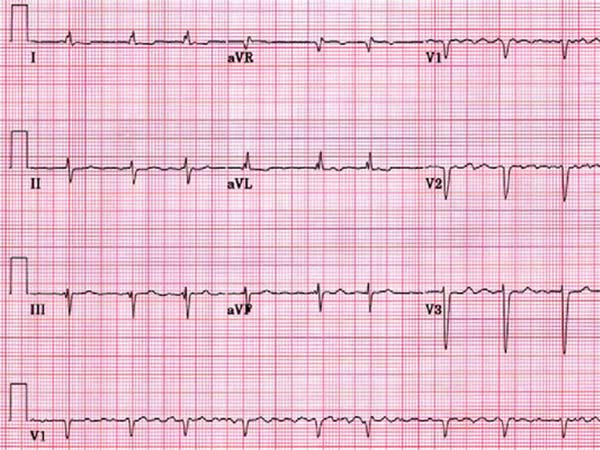Rivaroxaban monotherapy noninferior in atrial fibrillation and stable coronary disease
Rivaroxaban monotherapy is noninferior to combination therapy in patients with atrial fibrillation and stable coronary artery disease either not requiring intervention or more than one year after revascularisation. The late breaking results of the AFIRE study were presented in a Hot Line Session today at ESC Congress 2019 together with the World Congress of Cardiology and published in the New England Journal of Medicine.
 Principal investigator Dr Satoshi Yasuda of the National Cerebral and Cardiovascular Centre, Suita, Japan said: “This data supports the guideline recommendation to use oral anticoagulant monotherapy and avoid antiplatelet therapy in atrial fibrillation with coexisting stable coronary artery disease. The study was stopped early because of higher rates of all-cause mortality in the dual therapy arm, so caution is needed when interpreting the results.”
Principal investigator Dr Satoshi Yasuda of the National Cerebral and Cardiovascular Centre, Suita, Japan said: “This data supports the guideline recommendation to use oral anticoagulant monotherapy and avoid antiplatelet therapy in atrial fibrillation with coexisting stable coronary artery disease. The study was stopped early because of higher rates of all-cause mortality in the dual therapy arm, so caution is needed when interpreting the results.”
Around 20% to 30% of patients with atrial fibrillation also have coronary artery disease in Europe, the US, and worldwide.2–5 The number of patients with these two conditions is expected to increase, as the prevalence of atrial fibrillation rises due, in large part, to ageing populations. ESC guidelines recommend oral anticoagulant monotherapy for patients with atrial fibrillation and stable coronary artery disease not requiring intervention and for patients with atrial fibrillation beyond one year after percutaneous coronary intervention (PCI).
Dr Yasuda said: “This recommendation has yet to be supported by evidence from randomised controlled trials. Furthermore, there is a gap between guidelines and clinical practice, as substantial numbers of patients continue to be treated with an oral anticoagulant and antiplatelet agent. The use of an antiplatelet agent after PCI reduces the risk of ischaemic or atherothrombotic events8 but raises the risk of bleeding.”
The duration of antiplatelet therapy for patients with atrial fibrillation and stable coronary artery disease or beyond one year after PCI is a large clinical question that requires data from randomised controlled trials. A number of trials have examined management of atrial fibrillation patients within the first 12 months after PCI10–13 and the one trial evaluating therapy beyond one year was underpowered and inconclusive.
The AFIRE study investigated whether rivaroxaban monotherapy is noninferior to combination therapy (rivaroxaban plus an antiplatelet agent) in patients with atrial fibrillation and stable coronary artery disease not requiring PCI or more than one year after PCI or coronary artery bypass grafting.
A total of 2,236 patients from 294 centres in Japan were randomly assigned to rivaroxaban monotherapy or combination therapy (rivaroxaban plus an antiplatelet). The primary efficacy endpoint was stroke, systemic embolism, myocardial infarction, unstable angina requiring revascularisation, and all-cause mortality. The primary safety endpoint was major bleeding according to the International Society on Thrombosis and Haemostasis criteria.
Due to higher rates of all-cause mortality in the dual therapy arm, the independent data and safety monitoring committee recommended early termination of the study in July 2018 after a median follow-up of 24.1 months.
In the modified intention-to-treat population, the primary endpoint occurred in 89 patients receiving monotherapy and 121 patients receiving combination therapy, corresponding to incidence rates of 4.14% and 5.75% per year, respectively, which was significantly lower in the monotherapy group (hazard ratio [HR] 0.72; 95% confidence interval [CI] 0.55–0.95; p<0.001 for noninferiority). In the assessment for superiority for the primary efficacy endpoint, which was not prespecified, the p value was 0.0188.
In the safety population, the incidence rate of the primary safety endpoint was significantly lower in the monotherapy arm compared with the combination therapy arm (1.62% versus 2.76% per year; HR 0.59; 95% CI 0.39–0.89; p=0.0115).
All-cause mortality was significantly lower for monotherapy compared with combination therapy (1.85% versus 3.37%; HR 0.55; 95% CI 0.38–0.81). The occurrence of net adverse clinical events, which was the composite of all-cause death, myocardial infarction, stroke, and major bleeding, was lower in the monotherapy arm relative to the combination therapy arm (3.90% versus 6.28% per year).
Dr Yasuda said: “The results show that oral anticoagulant monotherapy, avoiding antiplatelet therapy, is a better approach for patients with atrial fibrillation and stable coronary artery disease. Monotherapy was superior to combination therapy for both safety and efficacy, including a mortality benefit. The data support the guideline recommendation of oral anticoagulant monotherapy.”
Source: European Society of Cardiology (ESC)

